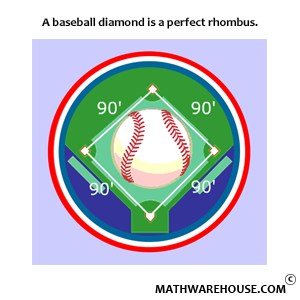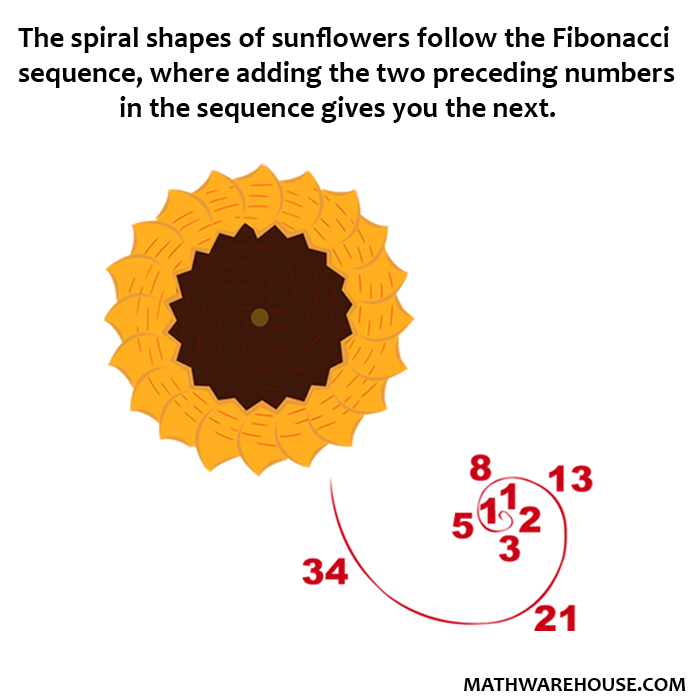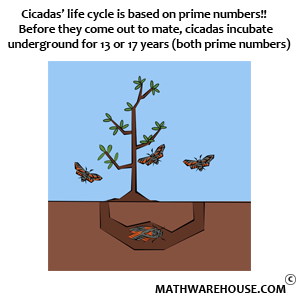Quick Overview
- $$\displaystyle \frac d {dx}\left(\sin kx\right) = k\cos kx$$
- $$\displaystyle \frac d {dx}\left(\cos kx\right) = -k\sin kx$$
- $$\displaystyle \frac d {dx}\left(\tan kx\right) = k\sec^2 kx$$
- $$\displaystyle \frac d {dx}\left(\cot kx\right) = -k\csc^2 kx$$
- $$\displaystyle \frac d {dx}\left(\sec kx\right) = k\sec kx\tan kx$$
- $$\displaystyle \frac d {dx}\left(\csc kx\right) = -k\csc kx\cot kx$$
- Notice that the derivatives of the co-functions are negative. That is, the derivative of the cosine, cotangent, and cosecant are the ones with negative signs.
- The trig functions are paired when it comes to differentiation: sine and cosine, tangent and secant, cotangent and cosecant.
- This lesson assumes you are familiar with the Power Rule, Product Rule, Quotient Rule and Chain Rule.
Derivations of the Derivatives of Trig Functions
The derivatives of each of the trig functions was derived in a previous lesson. If you would like to see why the derivatives are what they are, here are links to the lessons where the derivations are given:
Helpful Patterns
It may seem overwhelming to try and remember all of these derivatives, but there are three patterns that can be helpful.
Pattern 1: Negatives and the Co-functions.Only the derivatives of the co-functions have a negative sign.
$$ \begin{array}{lcl} \frac d {dx}\left(\sin x\right) = \cos x & \hspace{15mm} & \frac d {dx}\left(\cos x\right) = -\sin x\\[6pt] % \frac d {dx}\left(\tan x\right) = \sec^2 x & & \frac d {dx}\left(\cot x\right) = -\csc^2 x\\[6pt] % \frac d {dx}\left(\sec x\right) = \sec x\tan x & & \frac d {dx}\left(\csc x\right) = -\csc x\cot x\\ \end{array} $$
Pattern 2: Pairs of FunctionsThe trig functions are paired when it comes to derivatives.
$$ \frac d {dx}\left(\sin x\right) = \cos x \\ \frac d {dx} \left(\cos x\right) = -\sin x \\ \hspace{1mm} \\ \frac d {dx}\left(\tan x\right) = \sec^2 x \\ \frac d {dx}\left(\sec x\right) = \sec x \tan x \\ \hspace{1mm} \\ \frac d {dx}\left(\cot x\right) = -\csc^2 x \\ \frac d {dx}\left(\csc x\right) = -\csc x\cot x $$ Pattern 3: Each Type of Trig Function has its own PatternSines and Cosines have Single Function Derivatives
$$ \frac d {dx}\left(\sin x\right) = \cos x \\ \frac d {dx} \left(\cos x\right) = -\sin x $$Tangent and Cotangents have Squared Derivatives
$$ \frac d {dx}\left(\tan x\right) = \sec^2 x \\ \frac d {dx}\left(\cot x\right) = -\csc^2 x $$Secants and Cosecants have Two Function Derivatives
$$ \frac d {dx}\left(\sec x\right) = \sec x \tan x \\ \frac d {dx}\left(\csc x\right) = -\csc x\cot x $$Examples
Example 1
Find $$\displaystyle \frac d {dx}\left(\cos(x^2+9)\right)$$.
Step 1Use the chain rule to differentiate.
$$ \frac d {dx}\left(\cos(x^2+9)\right) = -\sin(x^2+9)\cdot \frac d {dx}\left(x^2 + 9\right) = -\sin(x^2+9)\cdot 2x = -2x\sin(x^2+9) $$
Answer$$\displaystyle \frac d {dx}\left(\cos(x^2+9)\right) = -2x\sin(x^2+9)$$
Example 2
Suppose $$f(x) = x^4\tan 3x$$. Find $$f'(x)$$.
Step 1Identify the factors in the function.
$$ f(x) = \blue{x^4}\red{\tan 3x} $$
Step 2Differentiate using the product rule.
$$ \begin{align*}% f'(x) & = \blue{4x^3}\tan 3x + x^4\cdot \red{3\sec^2 3x}\\ & = 4x^3\tan 3x + 3x^4\sec^2 3x \end{align*} $$
Step 3Simplify by factoring.
$$ \begin{align*} f'(x) & = 4\blue{x^3}\tan 3x + 3\blue{x^4}\sec^2 3x\\ & = \blue{x^3}\left(4\tan 3x + 3x\sec^2 3x\right) \end{align*} $$
Answer$$\displaystyle f'(x) = x^3\left(4\tan 3x + 3x\sec^2 3x\right)$$.
Example 3
Find $$\displaystyle \frac d {dx}\left(\frac{\sin 8x}{1 + \sec 8x}\right)$$.
Step 1Differentiate using the quotient rule. The parts in $$\blue{blue}$$ are related to the numerator.
$$ \begin{align*} \frac d {dx}\left(\frac{\sin 8x}{1 + \sec 8x}\right) & = \frac{(1 + \sec 8x)\cdot\blue{8\cos 8x} - \blue{\sin 8x}\cdot 8\sec 8x\tan 8x}{(1 + \sec 8x)^2} \end{align*} $$
Step 2Simplify the numerator.
$$ \begin{align*} \frac d {dx}\left(\frac{\sin 8x}{1 + \sec 8x}\right) & = \frac{(1 + \sec 8x)\cdot \blue 8\cos 8x - \sin 8x\cdot \blue 8\sec 8x\tan 8x}{(1 + \sec 8x)^2}\\[6pt] & = \frac{\blue 8(1 + \red{\sec 8x})\cos 8x - \blue 8\sin 8x\red{\sec 8x}\tan 8x}{(1 + \sec 8x)^2}\\[6pt] & = \frac{8\left(1 + \red{\frac 1 {\cos 8x}}\right)\cos 8x - 8\sin 8x\cdot\red{\frac 1 {\cos 8x}}\cdot\tan 8x}{(1 + \sec 8x)^2}\\[6pt] & = \frac{8\left(\cos 8x + \red 1\right) - 8\cdot \frac{\sin 8x}{\red{\cos 8x}}\cdot\tan 8x}{(1 + \sec 8x)^2}\\[6pt] & = \frac{8\left(\cos 8x + 1\right) - 8\tan 8x\tan 8x}{(1 + \sec 8x)^2}\\[6pt] & = \frac{8\left(\cos 8x + 1\right) - 8\tan^2 8x}{(1 + \sec 8x)^2}\\[6pt] & = \frac{8\left(\cos 8x + 1 - \tan^2 8x\right)}{(1 + \sec 8x)^2}\\[6pt] & = \frac{8\left(\cos 8x - \tan^2 8x + 1\right)}{(1 + \sec 8x)^2} \end{align*} $$
Answer$$\displaystyle \frac d {dx}\left(\frac{\sin 8x}{1 + \sec 8x}\right) = \frac{8\left(\cos 8x - \tan^2 8x + 1\right)}{(1 + \sec 8x)^2}$$
Example 4
Suppose $$f(x) = \cot^5 11x$$. Find $$f'\left(\frac \pi 3\right)$$.
Step 1Rewrite the function to emphasize that the cotangent is being raised to the fifth power.
$$ f(x) = \left(\cot 11x\right)^5 $$
Step 2Differentiate using the chain rule.
$$ \begin{align*} f'(x) & = 5\left(\cot 11x\right)^4\cdot \frac d {dx}\left(\cot 11x\right)\\[6pt] & = 5\left(\cot 11x\right)^4\cdot (-11\csc^2 11x)\\[6pt] & = -55\left(\cot 11x\right)^4\cdot \csc^2 11x \end{align*} $$
Step 3Evaluate $$f'\left(\frac \pi 3\right)$$
$$ \begin{align*} f'\left(\frac \pi 3\right) & = -55\left[\cot \left(11\cdot \frac \pi 3\right)\right]^4\cdot \csc^2\left(11\cdot \frac \pi 3\right)\\[6pt] & = -55\left[-\frac{\sqrt 3} 3\right]^4\cdot \left(-\frac{2\sqrt 3} 3\right)^2\\[6pt] & = -55\left[\frac 9{81}\right]\cdot \left(\frac{12} 9\right)\\[6pt] & = -\frac{220}{27} \end{align*} $$
Answer$$\displaystyle f'\left(\frac\pi 3\right) = -\frac{220}{27}$$.


















